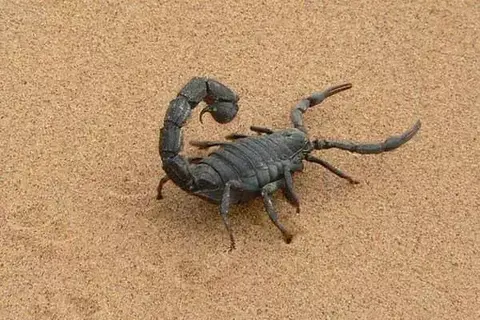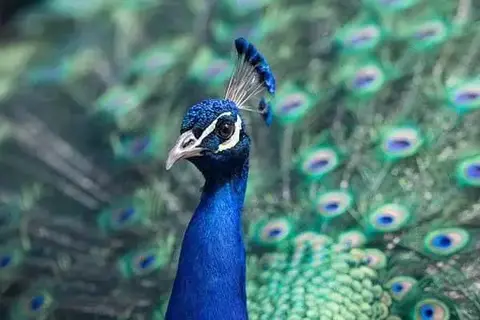7 Interesting Facts About Seagulls
Lucas TorresIt’s hard to imagine a sea coast without these birds. They live wherever you can catch water dwellers or collect scraps. The seagull is an aggressive and skittish bird. They live in large groups and constantly fight for a better place or food. Sometimes these fights go as far as destroying eggs and killing chicks. And they meet in every corner of the world. Regardless of their habitat, the character of the birds does not change. That’s not all the interesting facts about seagulls. The relationship between gulls exists only at the level of hunting together. Otherwise, these birds try not to come into contact with each other. There are no contacts at all between different kinds of gulls. Only occasionally a bigger bird eats a smaller fellow. Curiously, these birds are considered real universals. They fly very well, can run and dive very fast. We have collected for you the most interesting and surprising facts about seagulls, which you did not know exactly about.
7 facts about seagulls
 Photo by Matt Hardy on pexels
Photo by Matt Hardy on pexelsIt’s all right if one clutch dies. The female will instantly lay a few more eggs. They can repeat this process up to four times.
Gulls often settle in cities near rivers or seas. Then they prefer not to hunt in the sea, but to dig in the garbage and other scum.
These birds rarely have permanent access to freshwater. That’s why they’ve learned to drink seawater by filtering out unnecessary substances.
All seagulls are active during the day. Only the Galapagos species hunts at night and sleeps in a secluded place during the day.
Often cormorants or wild ducks settle with the seagulls. They manage to coexist peacefully with each other as long as they do not violate each other’s territorial boundaries.
These birds are real sea robbers. They often attack other birds and take away their prey. If it was done by a group, the birds will start fighting for the right to take their prey.
Gulls have membranes on their paws. But despite this, they prefer not to swim, but to walk along the shore or rest sitting on the water.
Top 3 most interesting facts about seagulls
 Photo by Adam Grabek on pexels
Photo by Adam Grabek on pexelsThese birds aren’t just attacking each other. If someone enters the colony, all the birds – and there may be several tens of thousands of them – will rush to defend their land. They fight so fiercely, they can kill any animal.
Sailors have learned from the behavior of these birds to determine the proximity of the storm. If the birds are sitting on masts or water, they don’t have to be afraid of the storm.
These birds in cities don’t just collect waste. They can fly into the busy streets and beg for food from passers-by.
A seagull: natural enemies, a population
These birds have no natural enemies. They furiously defend the entire colony if someone attacks them. Single seagulls can occasionally be attacked by an eagle or a hawk, but it does them no harm. Much more they suffer from themselves. Huge colonies are quickly depleting their food base, and the birds have to get out of their way and look for a new home.
Seagulls don’t suffer from humans. The more human settlements, the more birds will flock to them hoping for something to eat. Gulls can accompany fishing boats in the hope that something will be thrown at them. The population of these birds is constantly growing as more and more places appear where they can find food and nothing else they need.
Did you like interesting facts about seagulls? Share it with your friends.
Fun Facts About Seagulls
 Photo by Engin Akyurt on pexels
Photo by Engin Akyurt on pexelsMany people are unaware that seagulls are actually seabirds. They are members of the family Laridae and the suborder Lari. While gulls are closely related to terns, they are very distantly related to waders, skimmers, and auks. You might not know these fascinating facts about seagulls, but they will definitely intrigue you! If you want to learn more about this bird, read on to learn some interesting facts about a fascinating animal.
Seagulls are able to drink both fresh and saltwater. They have special glands on their bodies that excrete excess salt. While out at sea, they can safely drink the ocean water. Although seagulls do not form social bonds with other animals, they can be very intelligent in their hunting methods. For example, they use a unique method to break open hard-shelled prey and follow the plow tines to unearth it.
The seagull is an omnivorous bird. It is an omnivore, which means it eats both plants and meat. They are able to remember where they are eating by producing different sounds. Other than this, seagulls communicate using a variety of vocalizations and body movements. They are also incredibly intelligent when it comes to hunting. Their instincts allow them to spot their prey and hunt it down in a variety of ways, including dropping a hard-shelled prey on a rock to break it open and even following the plow tines to unearth a soft-shelled prey.
Although they have a low-pitched, high-pitched voice, young seagulls are surprisingly smart and can recognize human faces. They can be taught to distinguish human emotions by their vocalizations and body language. They can also dive head-first under the water for fish. Their distinctive beaks and wings can help them identify food sources, which is why most of them can be found near coastlines and inland lakes.
As well as being highly intelligent, seagulls are also able to drink fresh and saltwater. Their special glands sit above their eyes and secrete excess salt into the ocean. This allows them to safely drink the water without fear of dehydration. Unlike other birds, seagulls are monogamous and spend most of their time flying. Some species migrate south during the winter months. The rest of them are bipolar and live in colder climates, while others remain in the same country year-round.
There are many interesting facts about seagulls. The species is a social bird. It has a unique way of interacting with humans. The smallest seagulls are very cute, and the larger ones play with other birds in the ocean. The earliest recorded sighting of a seagull on the planet was around 30 million years ago. There are several species of seagulls throughout the world, including those on islands and in urban areas.
There are 54 species of seagulls. A seagull’s life span varies, but most live for ten to fifteen years. A seagull can eat up to 20 percent of its weight in food per day. This means that a single bird may consume up to three ounces of food every day. They live in colonies that include many different kinds of species. It is also very difficult to determine their exact diet.
While there are many different species of seagulls, they all share a common trait. They are both omnivorous and terrestrial. They eat a variety of foods, including fish, marine invertebrates, seeds, carrion, insects, and human refuse. They also enjoy eating human leftovers. Despite their appearance, a seagull’s diet can be a little bit boring and monotonous. But the gulls in cities are a bit more diverse.
Besides being a very intelligent bird, seagulls also possess traits that set them apart from other species. For example, they have been observed cracking the shell of hard-shelled fish to gain soft meat. They prefer open, calm water bodies and are primarily found in coastal areas, although some species have also adapted to live near bodies of freshwater. Generally, seagulls are monogamous and live for between ten and fifteen years.
How Long Do Seagulls Live?
 Photo by Julia Kuzenkov on pexels
Photo by Julia Kuzenkov on pexelsMany people wonder how long seagulls live, but most of us aren’t sure. They are very mobile and are opportunistic feeders. A seagull will eat up to 20 percent of its body weight in food each day. That’s about five to ten ounces of food. This is a lot of food! This is why a seagull can travel hundreds of miles in a single day. Oftentimes, the birds are found on beaches and other waterways, and also feed on carrion, insects, smaller birds, and eggs.
In the wild, seagulls live for five to fifteen years. While it takes years for them to reach their adult plumage, they only live for four to seven years. This early life also helps them develop their foraging skills, and they are able to observe other birds learn how to catch fish. If you want to know how long seagulls live, you can visit any local birdwatching site to learn more.
The lifespan of a seagull is anywhere from 15 to twenty years, depending on its habitat and food supply. These social animals have a long lifespan and can reach up to twenty years of age. The average lifespan of a seagull is approximately ten years. A seagull can live for fifteen to 20 if the food supply is adequate. Whether they breed in the wild or in captivity depends on the amount of food available.
The average lifespan of a seagull is around 20 years. Although they can live for twenty years in the wild, they are not considered long-lived. Most seagulls migrate to warmer regions during the winter season. Their migration is influenced by food availability and species. They spend most of their time on rooftops because they are a few degrees warmer than the ground, which increases their chances of surviving. During the breeding season, seagulls will be near a lake or a reservoir where they can build a nest.
Some gulls live a longer period than others. While they have a shorter lifespan than some birds, they do have an extremely long reproductive cycle. Some species are more susceptible to diseases than others. If a gull has an extended lifespan, the chances of it breeding at all are lower. It is also possible for a seagull to mate with another female in the same colony.
In the wild, seagulls live up to 20 years. But they are prone to be eaten by other animals and have relatively short lifespans. As a result, they are often a concern to homeowners. While many seagulls are not considered dangerous, the fact remains that they are often not a threat to the environment. They are highly visible and easily identifiable. And they are easy to identify with their characteristic raucous laugh.
- Birds7 Fun Facts About Herons

- InsectsWhat Is Ladybug Food?By Noah Young

- InsectsInteresting Facts About ScorpionsBy Nolan Foster

- Wildlife50 Most Interesting Facts About FoxesBy Murphy Scott

- WildlifeWhat Monkey Has A Red Bottom? Monkeys With Red BottomBy Nolan Foster

- WildlifeAmazing Facts About A StarfishBy Nolan Foster

- DogsCan Chinchilla Eat Carrots?By Karla Miller

- Birds25 Interesting Facts About ParrotsBy Noah Young

- Wildlife10 Interesting Facts About BadgersBy Lucas Torres

- BirdsWhat Is The Lifespan Of Peacock?By Karla Miller
